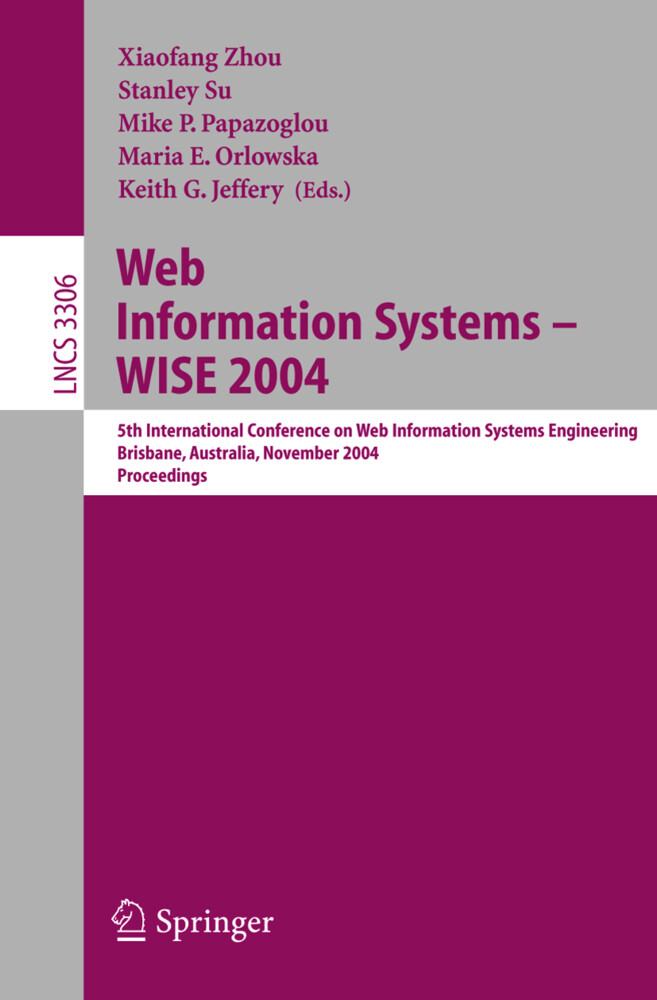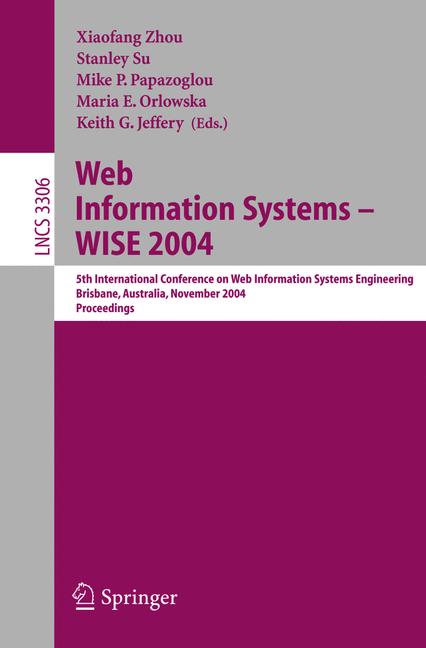
Zustellung: Mi, 16.07. - Fr, 18.07.
Versand in 2 Tagen
VersandkostenfreiBestellen & in Filiale abholen:
We have described the development of a new micro-payment system, NetPay, f- turing different ways of managing electronic money, or e-coins. NetPay provides an off-line, anonymous protocol that supports high-volume, low-cost electronic trans- tions over the Internet. We developed three kinds of e-wallets to manage coins in a NetPay-based system: a sever-side e-wallet allowing multiple computer access to- coins; a client-side e-wallet allowing customer PC management of the e-coins, and a cookie-based e-wallet cache to improve performance of the client-side e-wallet c- munication overhead. Experiences to date with NetPay prototypes have demonstrated it provides an effective micro-payment strategy and customers welcome the ability to manage their electronic coins in different ways. References 1. Dai, X. and Lo, B. : NetPay - An Efficient Protocol for Micropayments on the WWW. Fifth Australian World Wide Web Conference, Australia (1999) 2. Dai, X. , Grundy, J. and Lo, B. : Comparing and contrasting micro-payment models for- commerce systems, International Conferences of Info-tech and Info-net (ICII), China (2001) 3. Dai, X. , Grundy, J. : Architecture of a Micro-Payment System for Thin-Client Web App- cations. In Proceedings of the 2002 International Conference on Internet Computing, Las Vegas, CSREA Press, June 24-27, 444--450 4. Dai, X. and Grundy J. : "Customer Perception of a Thin-client Micro-payment System Issues and Experiences", Journal of End User Computing, 15(4), pp 62-77, (2003).
Inhaltsverzeichnis
Keynote Papers. - What Does It Mean to Measure Performance ? . - Trustworthy Computing. - Towards Next Generation Web Information Retrieval. - Session 1: Web Information System Modelling. - Making XML an Information Modeling Language. - Web Information Exchange Diagrams for UML. - A User Service Oriented Method to Model Web Information Systems. - The Power of Media Types. - Scenario Matching Using Functional Substitutability in Web Services. - Session 2: Payment and Security. - Three Kinds of E-wallets for a NetPay Micro-Payment System. - Information Assurance in Federated Identity Management: Experimentations and Issues. - Query-Log Based Authority Analysis for Web Information Search. - XML Signature Extensibility Using Custom Transforms. - Session 3: Information Extraction. - Extraction of Cognitively-Significant Place Names and Regions from Web-Based Physical Proximity Co-occurrences. - Query Based Chinese Phrase Extraction for Site Search. - Extracting Business Rules from Web Product Descriptions. - Wrapping HTML Tables into XML. - Vague Event-Based Related News Detection. - Session 4: Advanced Applications. - A Web Based Platform for the Design of Administrational Reference Process Models. - Technologies for Online Issuing Service of Documents. - AutoDBT: A Framework for Automatic Testing of Web Database Applications. - Web-Based Surgical Simulation of Craniofacial CT Data. - Applications of Data Mining in Web Services. - Session 5: Performance Issues. - A Framework for the Relational Implementation of Tree Algebra to Retrieve Structured Document Fragments. - An Efficient OLAP Query Processing Technique Using Measure Attribute Indexes. - Preserving Aggregation Semantic Constraints in XML Document Update. - Session 6: Linkage Analysis and Document Clustering. - Exploiting PageRank at DifferentBlock Level. - Multi-type Features Based Web Document Clustering. - Clustering Transactional XML Data with Semantically-Enriched Content and Structural Features. - Session 7: Web Caching and Content Analysis. - Schema-Less, Semantics-Based Change Detection for XML Documents. - Discovering Minimal Infrequent Structures from XML Documents. - Temporal Web Page Summarization. - Web Pre-fetching Using Adaptive Weight Hybrid-Order Markov Model. - Text Categorization Based on Domain Ontology. - Session 8: XML Query Processing. - AC-Tree: An Adaptive Structural Join Index. - Approximate Query Answering for a Heterogeneous XML Document Base. - Optimization of XML Transformations Using Template Specialization. - Materialized View Maintenance for XML Documents. - An Efficient Algorithm for Clustering XML Schemas. - Session 9: Web Search and Personalization. - Google s I m Feeling Lucky , Truly a Gamble? . - A Knowledge-Based Framework for the Rapid Development of Conversational Recommenders. - Categorizing Web Information on Subject with Statistical Language Modeling. - Optimizing Web Search Using Spreading Activation on the Clickthrough Data. - AVATAR: An Advanced Multi-agent Recommender System of Personalized TV Contents by Semantic Reasoning. - An Online Adaptive Method for Personalization of Search Engines. - Session 10: Workflow Management and Enterprise Information Systems. - Management of Serviceflow in a Flexible Way. - Recovery Nets: Towards Self-Adaptive Workflow Systems. - Structuring the Development of Inter-organizational Systems. - Contemplating Open Source Enterprise Systems. - Managing Changes to Virtual Enterprises on the Semantic Web. - Session 11: Business Processes. - A Reflective Approach to Keeping Business Characteristics in Business-End Service Composition. - A Domain Frameworkfor Representation of Web System Impacts. - Knowledge Management in the Business Process Negotiation. - A Web Service Oriented Integration Approach for Enterprise and Business-to-Business Applications. - Session 12: Deep Web and Dynamic Content. - A Two-Phase Sampling Technique to Improve the Accuracy of Text Similarities in the Categorisation of Hidden Web Databases. - Capturing Web Dynamics by Regular Approximation. - Deep Crawling in the Semantic Web: In Search of Deep Knowledge. - Session 13: Web Information System Design. - Designing Localized Web Sites. - Scaling Dynamic Web Content Provision Using Elapsed-Time-Based Content Degradation. - Component Reconfiguration Tool for Software Product Lines with XML Technology. - Generating Multidimensional Schemata from Relational Aggregation Queries. - Semantics Based Conformance Assessment of ebXML Business Processes. - Session 14: Ontology and Applications. - Usage Scenarios and Goals for Ontology Definition Metamodel. - XML Schema Matching Based on Incremental Ontology Update. - Spam Mail Filtering System Using Semantic Enrichment. - Integrating Ontology Knowledge into a Query Algebra for Multimedia Meta Objects. - Session 15: Multimedia, User Interfaces, and Languages. - Toward Semantic Web Services for Multimedia Adaptation. - A Lightweight Encryption Algorithm for Mobile Online Multimedia Devices. - Aspect-ARM: An Aspect-Oriented Active Rule System for Heterogeneous Multimedia Information. - Opportunistic Search with Semantic Fisheye Views. - A Graphical XQuery Language Using Nested Windows. - Grouping in MetaXQuery. - Session 16: Peer-to-Peer and Grid Systems. - Search in Unstructured Peer-to-Peer Networks. - A Formal Model for the Grid Security Infrastructure. - SPSS: A Case of Semantic Peer-to-Peer Search System. - An Efficient Broadcast Algorithm Based on Connected Dominating Set in Unstructured Peer-to-Peer Network. - A Time-Based Peer Trust Evaluation in P2P E-commerce Environments. - Fault Resilience of Structured P2P Systems.
Produktdetails
Erscheinungsdatum
18. November 2004
Sprache
englisch
Auflage
2004
Seitenanzahl
768
Reihe
Lecture Notes in Computer Science
Herausgegeben von
Mike P. Papazoglou, Stanley Su, Xiaofang Zhou, Maria E. Orlowska, Keith G. Jeffery, Michael P. Papazoglou
Verlag/Hersteller
Produktart
kartoniert
Abbildungen
XVII, 745 p.
Gewicht
1142 g
Größe (L/B/H)
235/155/41 mm
ISBN
9783540238942
Entdecken Sie mehr
Bewertungen
0 Bewertungen
Es wurden noch keine Bewertungen abgegeben. Schreiben Sie die erste Bewertung zu "Web Information Systems -- WISE 2004" und helfen Sie damit anderen bei der Kaufentscheidung.










